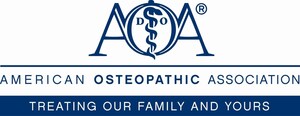Bumps to the Head Minor Cause for Concern to Parents
American Osteopathic Association Survey Shows That Only Half of Respondents Who Thought They or Their Kids Had a Concussion Sought Out Medical Treatment
SAN DIEGO, Oct. 9, 2012 /PRNewswire-USNewswire/ -- Evidence of the long-term effects of head injuries to athletes has prompted the NFL to partner with the Centers for Disease Control and Prevention (CDC) to educate the public of the dangers of concussions through the Heads Up: Concussion in Youth Sports campaign. However, the seriousness of a potential concussion does not seem to resonate with the public. In fact, only half of all respondents to a recent online survey by the American Osteopathic Association (AOA) sought treatment and were diagnosed by a medical professional when they received a head injury and thought they might have a concussion.
The main reason people did not seek treatment for their own possible concussion was they did not think the symptoms were serious enough or thought that it was just a headache. Surprisingly, three in five parents gave these same reasons for not taking their children with head injuries to a medical professional for treatment.
Better medical attention on the field?
The survey reported that only about one in four children obtained a possible concussion while playing either a school sponsored or non-school sponsored sport. In addition, children injured while playing sports may have a greater chance of being evaluated by a medical professional than if the injury occurred at home. According to the survey, more than eight in 10 parents said their children were evaluated by a medical professional, coach or event personnel when they obtained a head injury during a sporting event.
As of September 2012, 39 states across the country have adopted youth concussion laws. Many of these laws call for the removal of a youth athlete who appears to have suffered a concussion from the game or practice at the time the injury occurs and requires the child be evaluated and cleared by a licensed health care professional before returning to play.
There are six states that have no pending legislation or youth concussion laws:
- Arkansas
- Georgia
- Mississippi
- Montana
- Tennessee
- South Carolina
Jeffrey R. Bytomski, DO, an osteopathic family physician and head medical team physician at Duke University Medical Center in Durham, N.C., believes that people of all ages need to be aware of the seriousness of head injuries and see a physician if they suspect a concussion.
"Sometimes people don't seem to realize how serious a bump or blow to the head can be," says Dr. Bytomski. "It might not seem that serious at the time because they didn't lose consciousness or bleed, but this could be a traumatic brain injury and needs to be evaluated by a medical professional."
Recognizing the signs
Even though the survey found that seven in 10 respondents were incorrectly identifying symptoms like "shortness of breath" and "hearing damage" as symptoms of concussion, they still reported feeling confident in their ability to recognize concussion symptoms. Actual symptoms could include any of the following:
- Pain in area of head injury
- Dizziness
- Nausea or vomiting
- Confusion or inability to focus
- Slurred or incoherent speech
However, Dr. Bytomski worries that this confidence could be keeping them from seeking medical treatment.
"It is easy to rationalize and say 'this is just a headache and I am not nauseous or vomiting so it can't be a concussion,'" Dr. Bytomski observes. "However, they might be missing something that a physician will notice."
Other survey results of note:
- Men were more likely than women to report they ever had a concussion. However, along with respondents between the ages of 18 and 29, men were the most likely to say they did not seek treatment because they didn't think symptoms were serious enough.
- Four in 10 adult respondents said they received their concussions playing sports, making it the most commonly reported setting for this type of injury in grown-ups. This setting followed both in-home injuries and accidents outside the home where three in 10 respondents said they suffered concussions.
Concussion Resources
The AOA offers additional information about concussions, including a list of possible symptoms, advice on treatment and avoiding head injuries, at www.osteopathic.org/concussion.
About the Survey
The survey results are being announced during the American Osteopathic Association's (AOA) OMED 2012, the Osteopathic Medical Conference & Exposition. The conference, which began Oct. 7, will be held through Thursday, Oct. 11, at the San Diego Convention Center.
The survey was conducted from Aug. 14 to Aug. 16, 2012. A total of 1,303 respondents completed the online survey. A sample size of 1,303 has a margin of error of approximately +/- 2.7 % at the 95% confidence level.
About the American Osteopathic Association
The American Osteopathic Association (AOA) proudly represents its professional family of more than 100,000 osteopathic physicians (DOs) and osteopathic medical students; promotes public health; encourages scientific research; serves as the primary certifying body for DOs; is the accrediting agency for osteopathic medical schools; and has federal authority to accredit hospitals and other health care facilities. More information on DOs/osteopathic medicine can be found at www.osteopathic.org. Twitter: @AOAforMedia
SOURCE American Osteopathic Association
WANT YOUR COMPANY'S NEWS FEATURED ON PRNEWSWIRE.COM?
Newsrooms &
Influencers
Digital Media
Outlets
Journalists
Opted In






Share this article